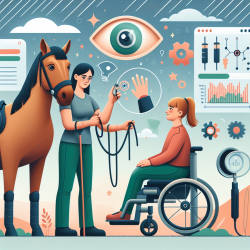Introduction
In the realm of occupational health, understanding the interplay between musculoskeletal injuries (MSI) and posttraumatic stress injury (PTSI) is crucial. A recent study, "Risk Factors for Developing Concurrent Posttraumatic Stress Injury After Work-Related Musculoskeletal Injury," provides valuable insights into this relationship, offering actionable outcomes for practitioners.
Key Findings
The study highlights several risk factors associated with the development of concurrent PTSI and MSI. Notably, public safety personnel, such as police officers, firefighters, and paramedics, are at a higher risk due to the nature of their work. The type of accident and injury severity also play significant roles. For instance, injuries resulting from transport accidents, assaults, or exposure to harm are more likely to lead to PTSI compared to overexertion injuries.
Furthermore, the study identifies lower educational attainment as a risk factor. This finding suggests that individuals with less education may have fewer resources or coping mechanisms to manage the psychological impact of their injuries.
Implications for Practitioners
For practitioners, these findings underscore the importance of early identification and intervention. Here are some strategies to consider:
- Early Screening: Implement screening tools to identify at-risk individuals early in the rehabilitation process. This can help tailor interventions to prevent the progression of PTSI.
- Targeted Interventions: Develop interventions that specifically address the needs of high-risk groups, such as public safety personnel. This could include specialized counseling or stress management programs.
- Education and Training: Provide education and training for both practitioners and patients to enhance understanding of the psychological impacts of MSI and PTSI.
Encouraging Further Research
While this study provides a solid foundation, further research is needed to explore the nuances of PTSI development. Practitioners are encouraged to engage in or support research initiatives that examine additional risk factors, such as pre-existing mental health conditions or workplace culture.
Conclusion
Understanding the risk factors for concurrent PTSI and MSI is essential for developing effective rehabilitation strategies. By implementing the study's findings, practitioners can improve outcomes for individuals at risk, ultimately enhancing their quality of life and return-to-work prospects.
To read the original research paper, please follow this link: Risk Factors for Developing Concurrent Posttraumatic Stress Injury After Work-Related Musculoskeletal Injury.










